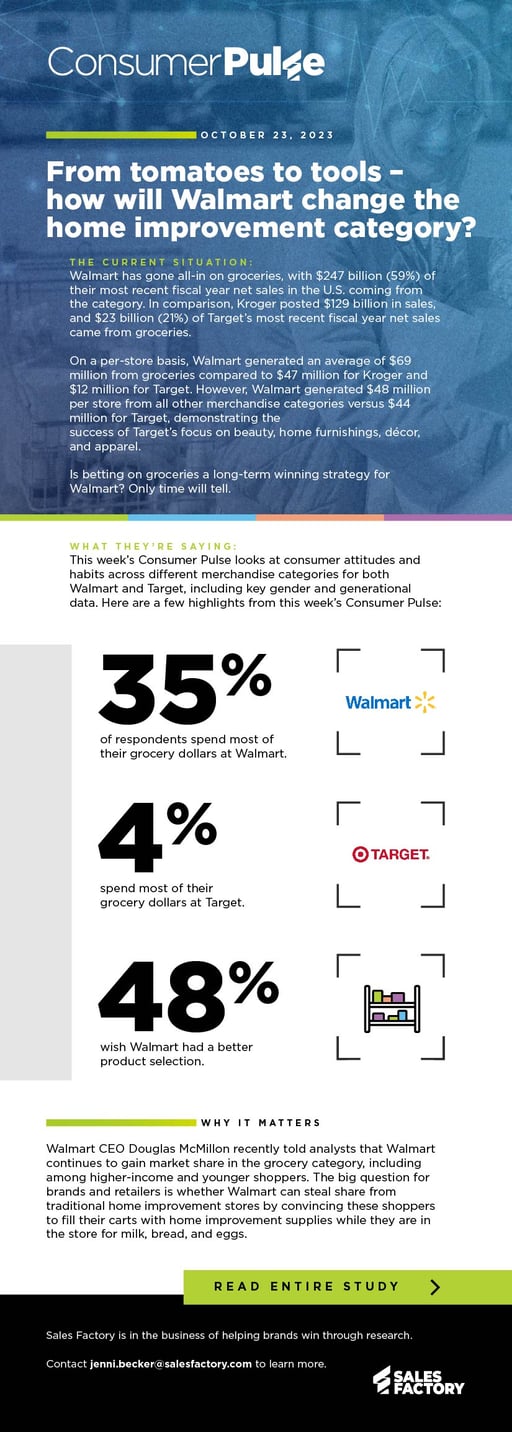The current situation:
Walmart has gone all-in on groceries, with $247 billion (59%) of their most recent fiscal year net sales in the U.S. coming from the category. In comparison, Kroger posted $129 billion in sales, and $23 billion (21%) of Target’s most recent fiscal year net sales came from groceries.
On a per-store basis, Walmart generated an average of $69 million from groceries compared to $47 million for Kroger and $12 million for Target. However, Walmart generated $48 million per store from all other merchandise categories versus $44 million for Target, demonstrating the success of Target’s focus on beauty, home furnishings, décor, and apparel.
Is betting on groceries a long-term winning strategy for Walmart? Only time will tell.
What they’re saying:
This week’s Consumer Pulse looks at consumer attitudes and habits across different merchandise categories for both Walmart and Target, including key gender and generational data. Here are a few highlights from this week’s Consumer Pulse:
• 35% of respondents spend most of their grocery dollars at Walmart.
• 4% spend most of their grocery dollars at Target.
• 48% wish Walmart had a better product selection.
Why it matters:
Walmart CEO Douglas McMillon recently told analysts that Walmart continues to gain market share in the grocery category, including among higher-income and younger shoppers. The big question for brands and retailers is whether Walmart can steal share from traditional home improvement stores by convincing these shoppers to fill their carts with home improvement supplies while they are in the store for milk, bread, and eggs.
Do you want to take the Pulse of your customers? Our Insights team will partner with you to design a study that will help you better understand your customers and their problems, and how your brand can win at retail.
To get additional insight into what this means for brands and retailers, read the entire study.
Like what you're reading?


